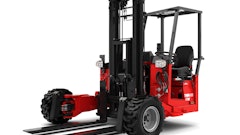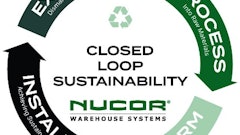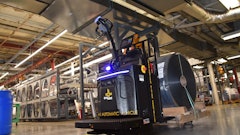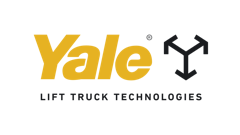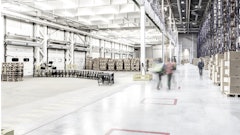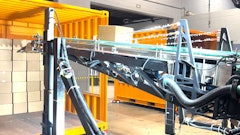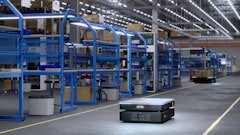
From business partners to potential employees, warehouse operators are under increasing pressure to demonstrate their commitment to sustainability. Sustainable waste management is one of the most visible ways to reduce environmental harm and demonstrate a commitment to eco-friendly practices. The challenge is implementing it in a way that yields tangible outcomes without creating a burden on workers or the bottom line.
Unlike some sustainability measures, reducing, reusing, and recycling waste requires daily, active engagement. Whereas LED lighting simply needs to be installed and maintained, sustainable waste management programs require buy-in from everyone working in the facility. They also require space since each waste stream typically needs its own staging area. Because of these time, training, and space challenges, warehouse facility owners often don’t know how to optimize their waste management programs. Items like corrugate and shrink wrap are typically recycled, but breakroom waste is often overlooked. While setting aside wood pallets for reuse may be common, improper storage can create hazards on the warehouse floor.
Environmentally friendly waste management practices can integrate well with existing operations and deliver meaningful results. By understanding sources of waste, making space for staging, and giving employees the right tools, warehouse operators can implement a truly sustainable program.
What makes a waste management program truly sustainable?
While recycling and reusing some materials is commonplace in most warehouses, sustainable waste management is more comprehensive. It incorporates the three Rs—reduce, re-use and recycle—into a holistic program. For example, waste can be reduced by replacing disposable items with reusable alternatives. Packaging materials, such as attached lid containers, can be re-used to seal return packages. And finally, many of the items that can’t be reduced or re-used can be recycled.
Effectively delivering on the three Rs requires planning and training, and it can seem like an additional burden on workers who are already under pressure to quickly fulfill orders. However, with a plan that prioritizes efficiency, sustainable waste management can actually streamline operations.
Understand waste streams with a root cause analysis
To implement the three Rs and improve efficiency, it’s important to know where and how waste is generated. This step is critical because it’s difficult to sort waste once it’s co-mingled. It’s also the best opportunity to assess the best plan of action for each type of waste. The root cause analysis may uncover that there are alternative options for common disposable items, or that items that are typically discarded can be reused for other purposes. It will also reveal the inefficiencies and risks of current waste management practices.
Create a place for every type of waste
Improper storage can create safety hazards and potentially damage waste items, making it impossible to reuse or recycle them. Wood pallets, for instance, are often piled up on the warehouse floor. As pieces break off, workers drive forklifts or pallet jacks over the splintered wood, which damages the machinery and can lead to accidents and wear and tear on the equipment and concrete floor. Even though space is at a premium, making room for varying waste streams can pay off in reduced risk.
There are ways to use space efficiently. For instance, each waste stream doesn’t need its own dock door. Where dock space isn’t available, consider using trailers or the warehouse truck yard for staging waste.
Provide employees with the right tools and training
Getting waste to the right place requires employee involvement. Employees need to be trained on how to identify each type of waste and where to put it. Warehouse operators can leverage the 5S approach, a lean warehousing strategy, to shape training and implementation:
- Sort—Sort waste items by type.
- ·Set in Order—Place bins and staging areas in the optimal location.
- Shine—Inspect and refine processes on a regular basis.
- Standardize—Create and document standards to ensure consistency.
- Sustain—Use regular audits to identify and implement continuous improvements.
For example, place bins near the work zones where waste is generated. Use visual cues, such as color-coding and signage to help guide employees to perform the right tasks. Extend these practices to breakroom and office areas, so waste generated in those areas can be captured as well. Beyond initial onboarding, it’s a good idea to have refreshers at daily or weekly meetings, so that sustainability stays top of mind. And because waste management programs inevitably evolve, incorporate a change management aspect to drive communication, engagement and process change.
Make meaningful progress toward sustainability
Reducing, re-using and recycling warehouse waste is good for the environment, the brand image and the bottom line. Employees, investors and partners want to work with organizations that are making true progress towards sustainability, not just using it as a marketing gimmick. By partnering with a reputable waste hauler and potentially an external janitorial provider, warehouse operators can make meaningful strides in sustainability. Using a comprehensive approach can overcome time, training and space challenges without complicating their core mission of fulfilling orders quickly and accurately.














